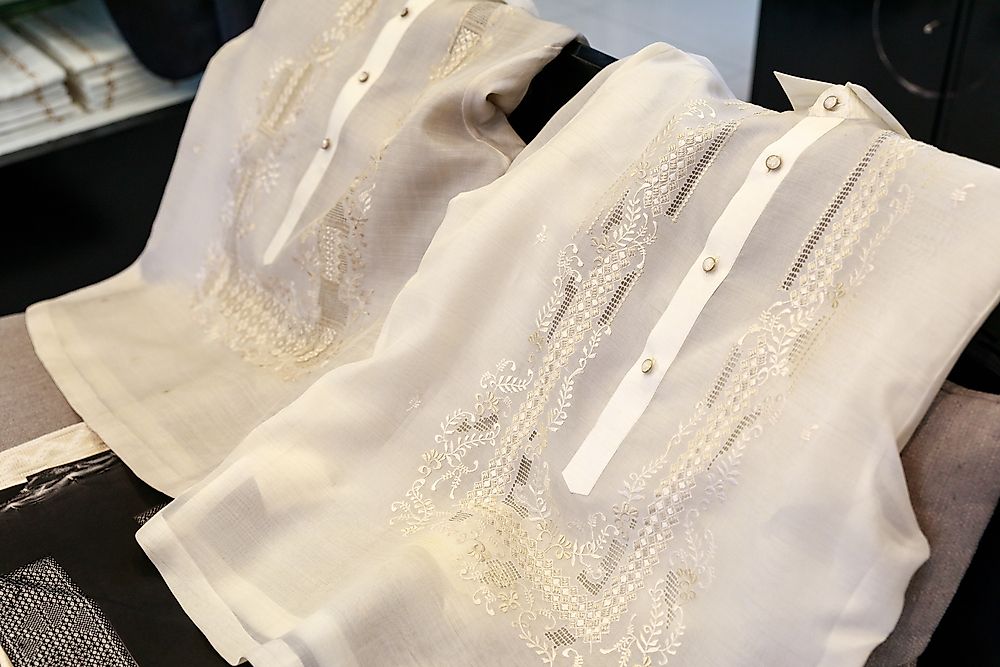Who Are The Tagalog People?

5. Description and Geographic Distribution
The Tagalog people are a large minority ethnic group in the Philippines, many of which speak the Tagalog language. The term Tagalog is a combination of two words, taga and ilog, which literally means “people living along the river bank.” The Tagalogs are famous for their so-called “Bayanihan” spirit, which is interpreted as striving in cooperation with fellow villagers in doing any heavy manual labor to make the task easier. However, this practice is not given as much importance in modern, urban areas as in traditional rural settings. The Tagalogs are fond of celebrations at the drop of a hat, which may consist of drinking alcoholic beverages, presenting plays, dancing, and enjoying card games. Tagalogs can mainly be found in Manila and the outlying cities of Quezon, Bataan, Aurora, Cavite, Bulacan, Laguna, Nueva Ecija, and Marinduque in the Philippines.
4. Historical Role
It is said that the Tagalogs migrated from Taiwan to Luzon Island in the Philippines around 4,000 BCE. There is evidence concerning this migration in a 9th Century copperplate called the Laguna Copperplate Inscription, which was found along the Luzon coastline. However, today the Tagalog people include a mix of either Spanish, Chinese, or Malay ethnicities, creating a mestizo, or "half-blood", population. The Tagalogs played a central role in trade with the early Chinese that arrived in junks before the Spaniards arrived in the Philippines. They were also the first to revolt against the ill treatment of the Spanish conquistadors and their religious persecutions. They were also the first to antagonize the so called "American Imperialism" (colonization) of the late 19th Century after the Spaniards left the country.
3. Arts, Culture, and Cuisine
The Tagalogs comprise the second biggest in population in the country after the Visayans, with the latter living centered around the middle parts of the Philippines where the world-famous Boracay Beach can be found. The early Tagalogs worshiped nature deities that had a hierarchical system of gods. They also had their own government and educational system. Later, the Spaniards converted most urban Tagalogs to Christianity. Tagalogs had a custom that dictated that the groom lives with the bride in her family home until such time that they can build their own. Workers in rice fields often work accompanied with singing, and men may relax in the evenings while singing to their prospective ladyloves. Essentially, Tagalogs like a relaxed lifestyle, specially those in rural areas. Festivals are the high points occupying their monthly calendars. Tagalog cuisine has many external cultural influences, ranging from Chinese, Spanish, Muslim, and American cuisine alike. Traditional Tagalog dishes can still be found here, such as sticky rice cakes, coconut sweets, crusty pitas filled with molasses, and wines created from sugar cane and coconut.
2. Notable Tagalog
Many notable Tagalogs are known worldwide, including many of the revolutionaries who fought against the Spaniards. These have included:
- Jose Rizal, a national hero and a doctor of medicine who wrote two books about Spanish abuses adapting them in his novels.
- Emilio Aguinaldo, a revolutionary leader during the American occupation who later became the first president of the Philippines.
- Manuel L. Quezon, also a President of the Filipino republic.
- Francisco Balagtas, a revolutionary poet.
- Juan Luna, a Filipino artist and revolutionary who exhibited his works in Spain.
- Other revolutionary leaders of the 1890s, including the likes of Apolinario Mabini, Andres Bonifacio, and Emilio Jacinto.
- Post-war leaders famous for their individual contribution to the country are Presidents Manuel Quezon and Jose Laurel. Controversial Filipinos have included President Ferdinand Marcos and the Senator Benigno Aquino, who were some of the most important government officials in Filipino history.
1. External Threats and Disputes
Today, the Scarborough Shoal in the Philippine Sea has been the subject of a matter that has been brought before the United Nations Court. Several countries have made territorial claims to the islands, and among the countries contesting the islands are the Philippines, China, and Taiwan. Historical records show that the Scarborough Shoal was named by Philip D'Auvergne, captain of an East Indian Company ship with the same name, in 1784. Other islands in the South China Sea that are being disputed are the Paracel Islands and the Spratly Islands. The Paracel are being contested by Vietnam, China, and Taiwan, while the Spratlys are being disputed by China, Brunei, Malaysia, Vietnam, Taiwan, and the Philippines. The Spratlys are also occupied by several military units from several of these countries. The United Nations has also entered the picture in many of these matters, but no internationally binding ruling has yet been given.











